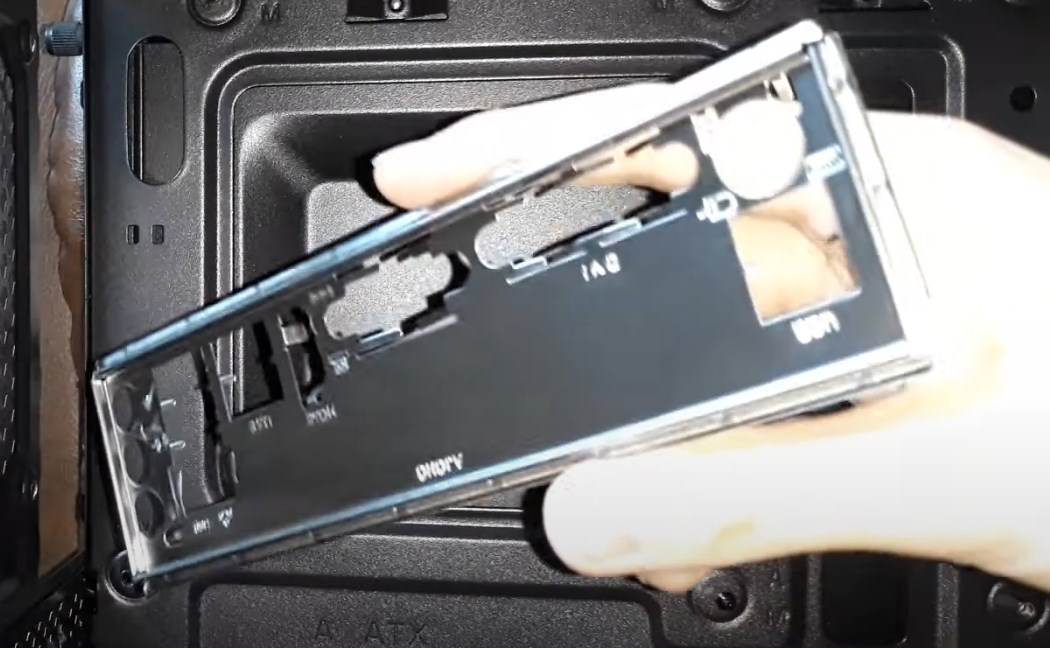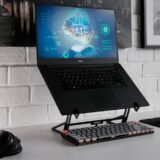Ultimate Guide on Installing the IO Shield Effectively
In the intricate landscape of computer components, certain elements often get overlooked due to their seemingly minor roles. Among such is the IO shield. Despite its perceived secondary importance, the IO shield plays a pivotal role in safeguarding integral computer components.
This guide offers an in-depth look at the IO shield—its essence, benefits, and the intricate details of its installation.
Understanding the IO Shield
The Input/Output (IO) barrier serves as a protective sheet of metal, primarily designed to safeguard the central board against external contaminants like dust. Its secondary function is to neatly delineate the motherboard’s necessary ports from redundant spaces, ensuring seamless accessibility at the rear of the computer chassis.
For instance, consider the shield designed for the Zebronics H55 central board. The configurations on this barrier mirror the specific ports of this board, determining its compatibility. While it’s feasible to modify certain protrusions on the shield that may hinder port access, it’s vital to approach such alterations with caution.
However, it’s essential to note that not all IO barriers are universally compatible. Their design intricacies often align with specific motherboard layouts.
Significance of the IO Barrier
Though it might appear trivial, the IO barrier carries several vital roles:
- Ensuring a dust-free environment within the computer chassis;
- Guarding against unexpected electrical discharges;
- Enhancing connection reliability between connectors;
- Aiding in optimal air circulation within the system;
- Regulating potential pressure spikes when connecting peripherals.
It’s undeniable: for maintaining optimal system health, both temperature regulation and dust management are crucial. The IO barrier aids significantly in these arenas.
The Imperativeness of the IO Barrier
Deploying an IO shield is paramount in environments susceptible to dust, as it acts as a sentinel for crucial components like the central board, processing unit, and Graphics Processing Unit (GPU). For setups in pristine environments, its deployment can be optional. Yet, given the unpredictability of surroundings, its inclusion remains recommended.
Ensuring Compatibility before Installation
Prior to commencing the installation, ascertain the harmonious relationship between the IO shield, central board, and computer chassis. This involves a meticulous alignment check of the IO barrier against the motherboard’s rear, ensuring unobstructed port visibility.
If your central board is already snug inside its chassis and aligns perfectly, compatibility is likely assured. Other compatibility checks can involve matching central board models and chipsets.
Stepwise Guide to IO Shield Deployment
Fitting the IO shield within a computer setup is a straightforward affair. While crafting a computing setup, it naturally aligns with the central board’s positioning.
- Detach the central board if it’s already anchored within the chassis;
- Grasping the IO shield with one hand and the motherboard with the other, align the two components;
- Carefully nestle the combined units into the computer chassis, ensuring alignment with the anchoring holes;
- Secure the central board using appropriate fasteners, ensuring all ports remain unobstructed.
Occasionally, some central boards might not include an IO shield. In such scenarios, utilizing existing shields or procuring suitable replacements becomes necessary. It’s crucial, however, to ensure compatibility to avoid potential port obstructions.
FAQs:
- Initiating the Installation Process: Ideally, secure the IO shield within the computer chassis first, followed by the motherboard;
- Positioning the IO Shield: The shield should reside within the computer chassis, providing support to both the chassis and central board;
- Universal IO Shield Dimensions: Generally, universal IO shields maintain consistent dimensions. However, port configurations can vary based on the central board’s architecture.
Conclusion
The IO shield, often viewed as optional, serves as both a protector and enhancer, depending on individual circumstances and environments. Incorporating it into your computer setup fortifies your system against external adversities, ensuring longevity and optimal performance.




















